8 Warning Signs a Reopened Hair Salon Isn’t Safe to Visit
Updated: Mar. 16, 2023
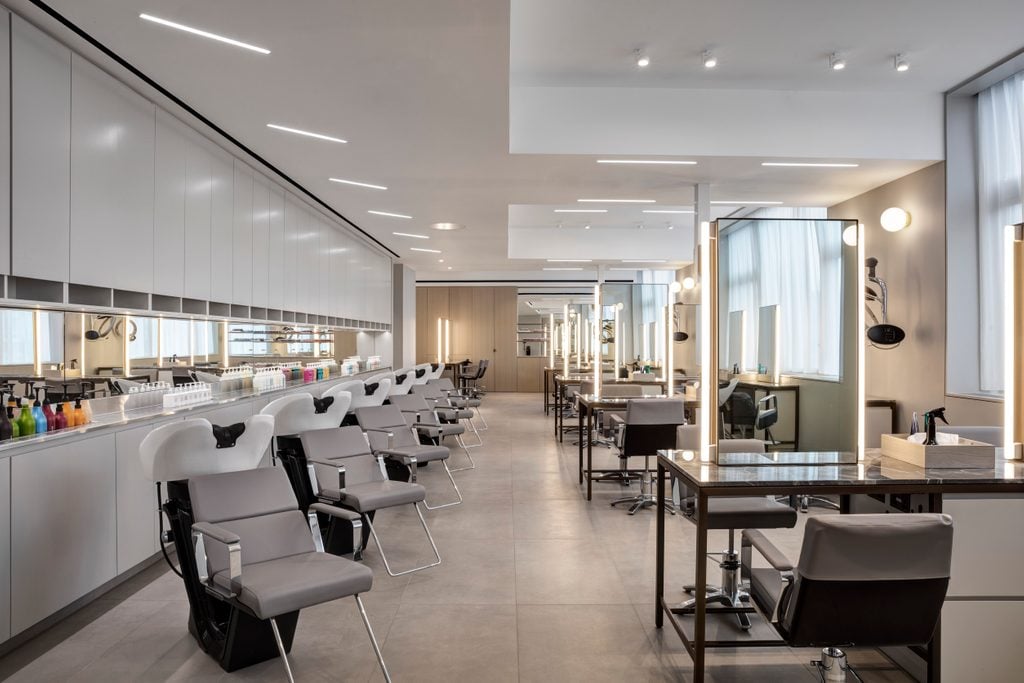
Heading back for your first trim since the pandemic began? Here's how to tell if your salon makes the cut in terms of the new safety standards.
Many states are now allowing hair studios to reopen, and while that’s music to the ears of those who struggled through DIY haircuts at home or opted not to dye their own hair, salons aren’t going to have the same leisurely spa vibe they once did. “In the United States and Canada, each state and province issues recommended guidelines,” says Jeff Alford, CEO of the CBON (Cosmetic Brands of North America) Group in Toronto. “Up until now, you’d never feel scared to have a facial done or go get a haircut, but now the public is feeling that the beauty industry is one of the most dangerous places to go. We need to step up in our industry and get educated, and the public needs to get educated, too.”
So, how can you tell if a salon is stepping up during the pandemic? Check for these eight red flags. If you encounter them, it might be time to find a new salon.
There are no masks in sight
“We’re suggesting that it’s obligatory for the staff to wear a mask and [to] let the customer decide if they don’t think it’s necessary,” Alford says. For the safest environment for all, though, everyone in the salon should be wearing a mask. The mask protects those around you from your germs in the event that you are asymptomatic but have the virus, and it can also help prevent you from inhaling aerosolized respiratory droplets. One recent Japanese study found that coronavirus cases are nearly 19 times more likely to be transmitted in indoor spaces than outdoor ones.
Besides maintaining a six-foot distance from others, masks are one of the most effective ways to slow the spread of coronavirus. Case in point: In May, two Missouri hairstylists had close contact with 140 clients before they were aware they had COVID-19 but while they were experiencing illness symptoms. Both the clients and the stylists wore masks, and none of the clients ended up testing positive.
Still on the fence about donning a mask? These 11 eye-opening facts will convince you that it’s a really good idea to wear one.
You’re not seeing any sanitization procedures in practice
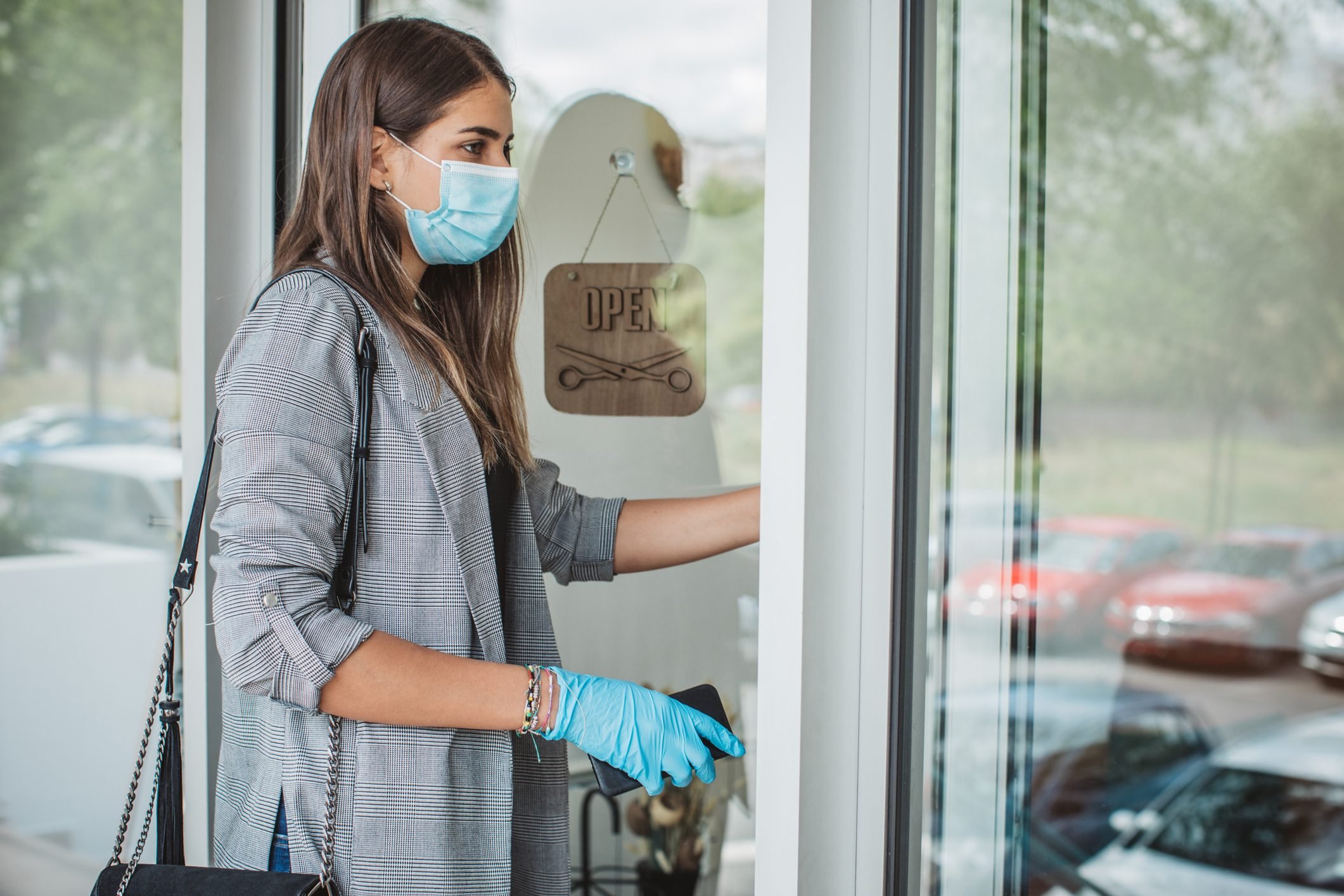
In the past, stylists and salon staff would sanitize tools between each client, but now they should be disinfecting chairs (including hair-washing-station chairs) and washing their hands between each guest as well, says George Papanikolas, a MATRIX celebrity colorist in New York City. Alford advises all stylists to wash hands and disinfect at a time when clients are watching so they can see with their own eyes the safety steps in place.
All those sprays and disinfecting wipes don’t come cheap. As a result, some salons are adding a safety surcharge or fee to help cover the costs of these products and other new equipment, such as plexiglass barriers between stations.
Clients are congregating in the waiting area
To help limit contact with others, salons should stagger appointments so you won’t meet others in the entryway or exit, Papanikolas says. Safe salons will kindly ask you to wait outside or in your car until you receive a call or text letting you know that your chair is empty and has been disinfected and that the stylist is ready for you.
The salon didn’t contact you about new safety procedures
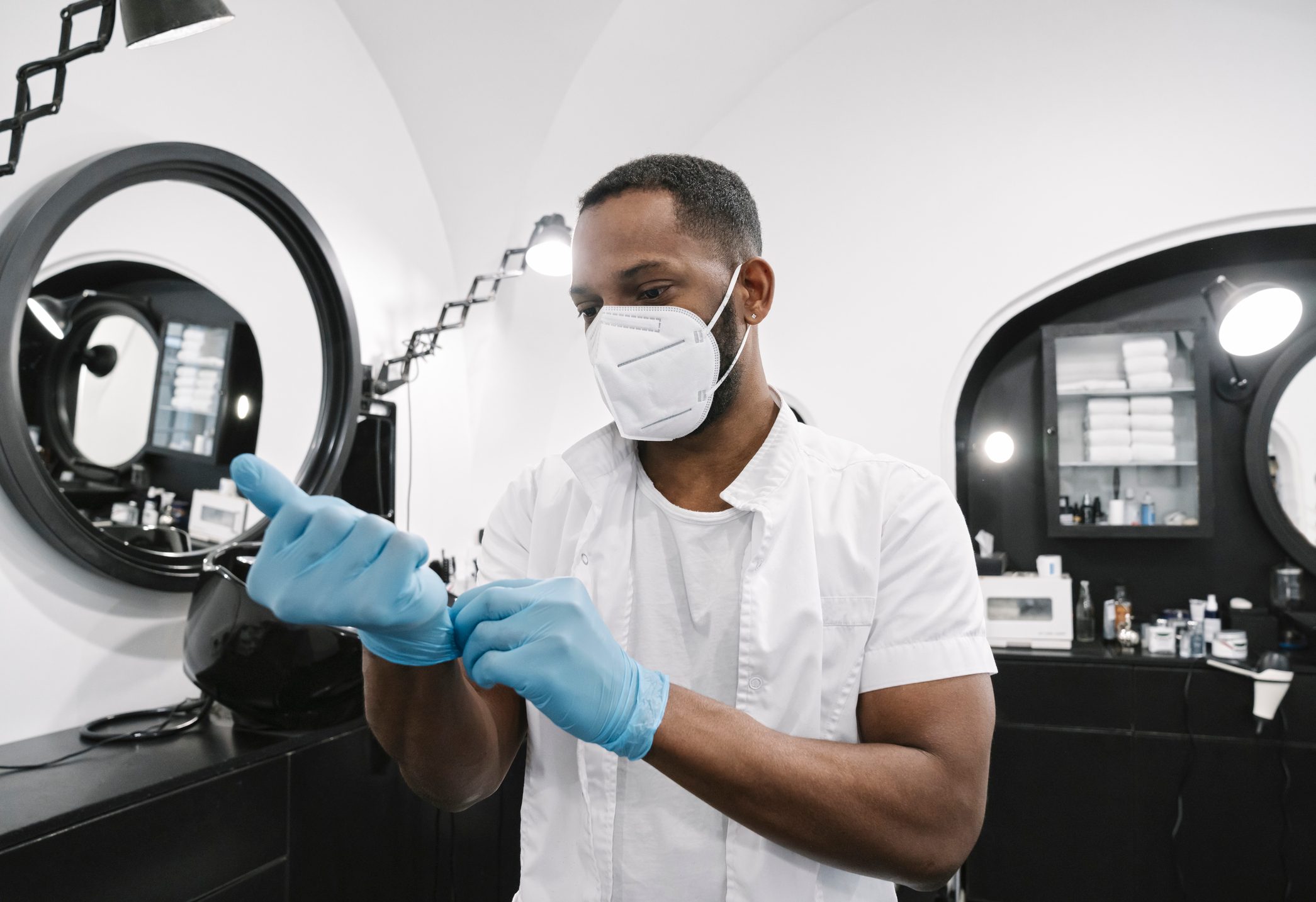
Salons should be forthcoming about this information. If you didn’t receive an email about them or speak to someone ahead of time, check the salon’s website or social media page. If there’s nothing, there’s a problem. Since it’s challenging to know how buttoned-up a salon’s sanitation is before you enter the premises, Alford suggests that clients call and ask about the following things to see if they’re playing it safe:
-
What social distancing measures have been enacted?
-
Are all staff and clients required to wear masks?
-
Are you using hospital-grade disinfectants?
-
How often do stylists wash their hands?
“We’re encouraging the public to become proactive,” Alford says. Still, it’s even better if the salon shares this before you have to ask. “From a consumer’s point of view, if a business that I’m supporting hasn’t posted any COVID-19 precautions on their website, social media, email newsletters, or on their front doors or windows, that immediately would be a red flag for me,” says Tricia Rivas, “chief dream operator” and owner of Trixies Salon in Des Moines, Iowa.
It’s as crowded as ever
As mentioned earlier, salons should alternate appointment times and allow for at least six feet between other stylists and clients, Papanikolas says. Plexiglass barriers between stations are now more common, as well. If a salon is safe, you will see a remodeled space with far fewer people in a room at once, Rivas says. Here’s a stark reminder of what can happen when you don’t social-distance.
Hair dryers are in frequent use in large spaces
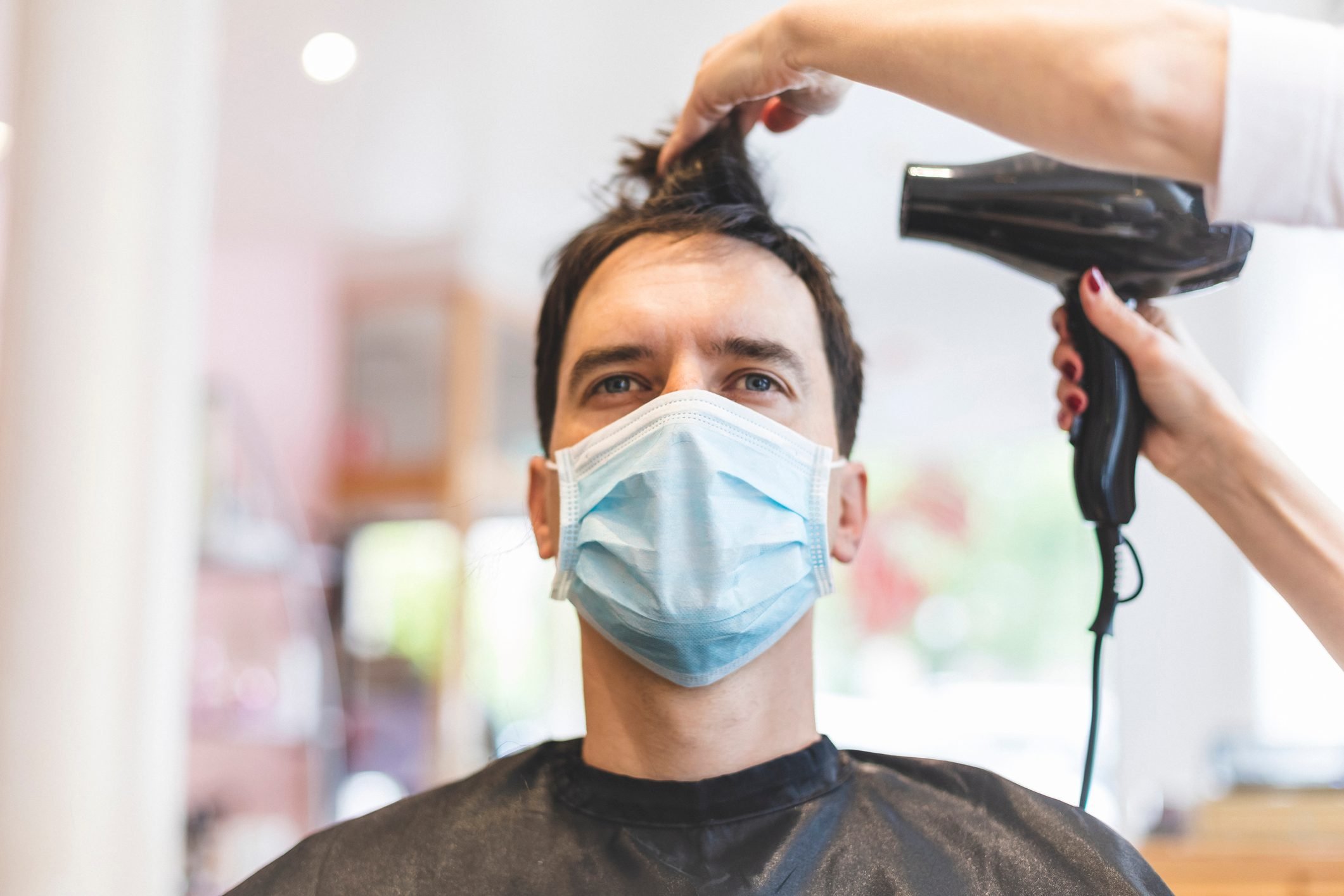
“High-powered dryers were great pre-COVID-19, but no longer,” Alford says. That’s because we’re learning that, while unlikely, a blow-dryer may accelerate the spread of respiratory droplets from an infected individual to others, according to Cedars-Sinai health experts. Some states, including New Hampshire, have made salon blow-dry services off-limits. In states where it is allowed, “blow-dry rooms or sections may be opened so the droplets aren’t spread to other clients and stylists,” Alford says.
Many salons, including Rivas’ Trixies, do not offer blow-drying or styling at this time—both as a safety precaution for airflow and to reduce exposure time to others within the salon space. Besides blow-dryers, here are 13 other things you won’t see in hair salons anymore.
Guests are allowed to bring kids or other companions
Clients should be instructed to arrive with as little baggage as possible, Alford says. That means literal bags, such as purses and backpacks, as well as other people, including kids and spouses. The fewer things and people in an enclosed space, the better to reduce the potential transmission risk. A safe salon should call or email about all of these capacity restrictions in advance of your appointment.
They still allow cash payments
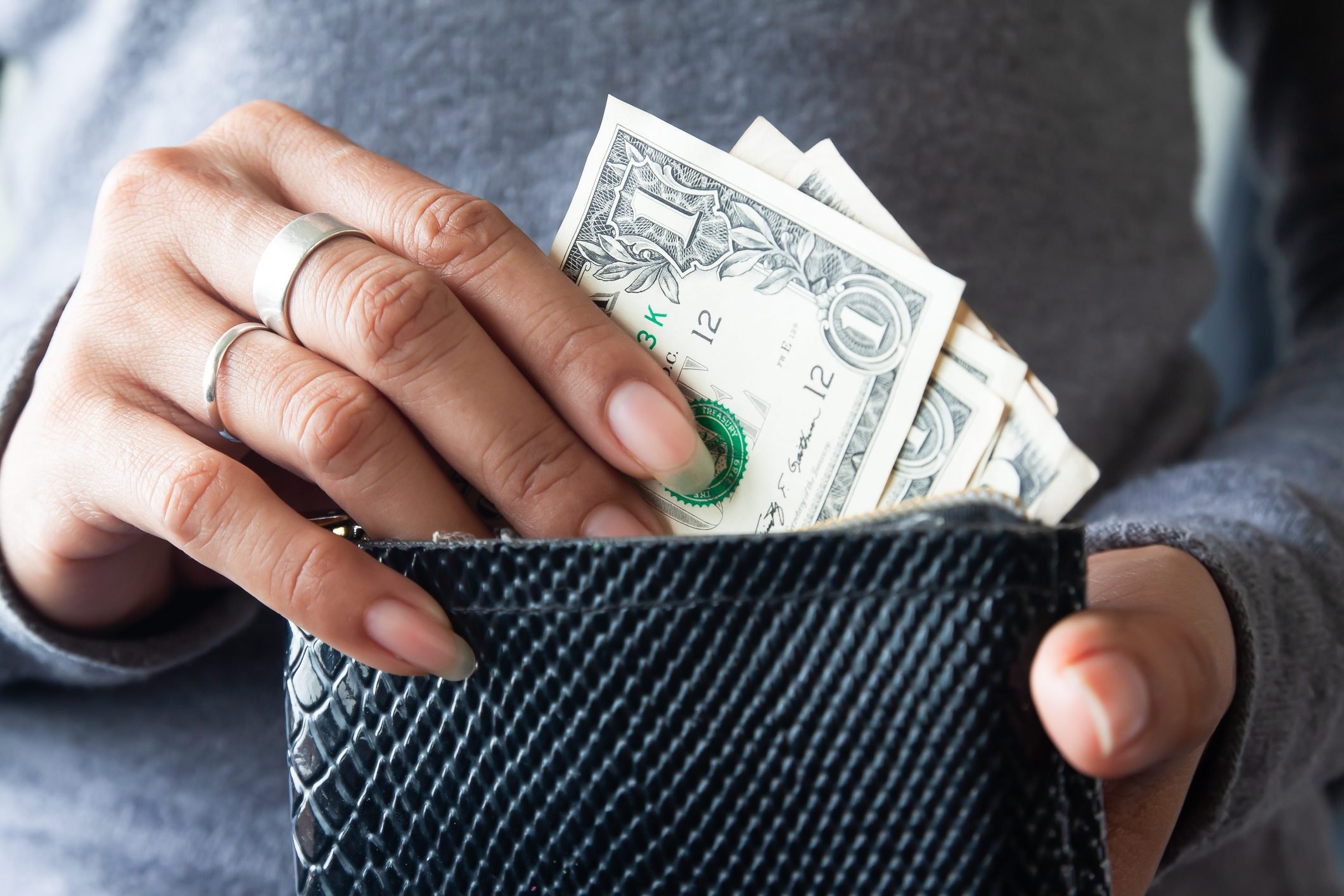
In an ideal world, you would prepay during the online booking process or over the phone before you arrive. For many salons, though, that’s not an option quite yet (especially since some clients aren’t comfortable paying until after they receive their services). Most are now enacting touchless or at least credit-card-only payment since cash can hold onto a surprising number of germs.
For more on this developing situation, see our comprehensive Coronavirus Guide.
